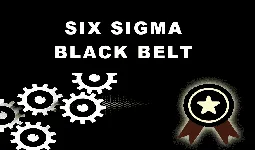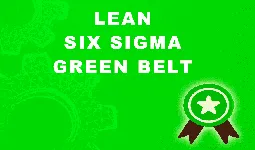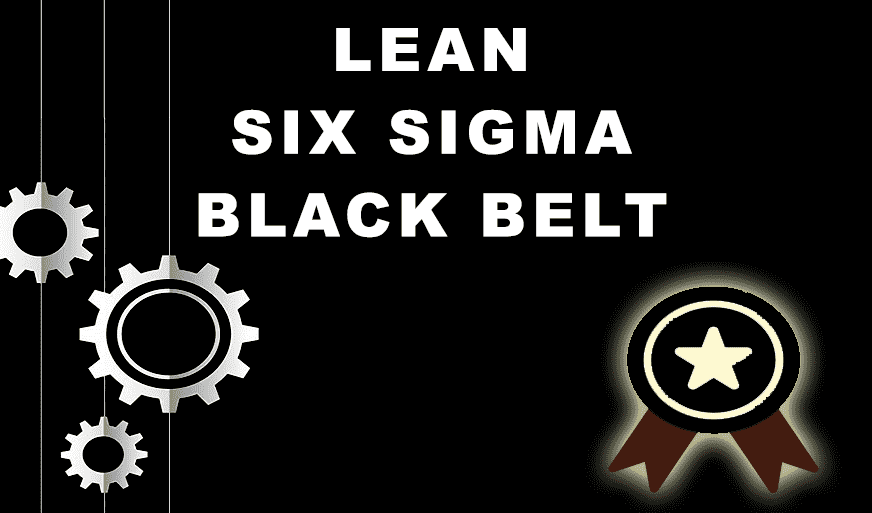A Deep Dive into Lean Continuous Improvement Tools
-
 By Sushmith
By Sushmith - Published on Dec 26 2023

Table of Contents
- Understanding the Power of LCI tools
- Essential Tools for Daily Enhancement
- Tools for Optimizing Workspaces Efficiency
- Management Tools to achieve Efficient Flow
- Best LCI Tools for Reliable Quality Assurance
- Facts about LCI you must know
- Tips to Choosing the Perfect LCI Tool
- Empowering Excellence beyond Lean
- Frequently Asked Questions
- Summary
Understanding the Power of LCI tools
The Lean Continuous Improvement model is the most sought after concept that organizations use to achieve quality operation in their modern business models. Businesses achieve greater heights with the help of LCI Tools, the hidden key of this revolutionary methodology.
Lean Continuous Improvement Tools are more than just tools; they are strategic assets that are carefully developed to perfectly align business processes. These tools not only help design and plan but also help create an environment that efficiency creates a long-term success.
But what exactly are LCI tools? Imagine them as the Swiss Army knife of operational optimization.
Each tool tackles a specific inefficiency, from streamlining workflows to eliminating waste and boosting your bottom line. Think Kanban boards, the visual magnets that pull your team towards peak efficiency. Or 5S methodology, the de-cluttering master tool that helps improve productivity.
And let's not forget the PDCA cycle: the iterative loop that lets you experiment, learn, and improve with lightning speed.
In this Part 5 of our Guide: Mastering Organizational Quality with Lean Continuous Improvement, we explore the power of key LCI tools such as Value Stream Mapping, 5S, and more, revealing their unique features and applications that improve organizational efficiency providing better quality control.
Essential Tools for Daily Enhancement
Forget the stale routine, the endless to-do list that seems to multiply overnight. Adapt to the Lean revolution of daily enhancement, where every morning sets up a spark for productivity and your workflow becomes an act of accomplishment. But this isn't some mystical chant or wishful thinking.
Essential Lean Tools to transform your workday:
Kanban boards: Visual magnets like sticky notes and scattered emails pull your tasks into focus, prioritize with laser precision, and turn your team into a collaborative powerhouse. No more bottlenecks, no more confusion – just crystal-clear workflows that propel you towards daily victories.
Dive deeper into the details of Kanban boards in our blog, Kanban Board: A Detailed Guide to Understanding and Usage
5S: It's not about tidying a desk; it's about keeping your mind clutter-free, organizing your space, and eliminating distractions. Imagine a workspace infused with zen, finding what you need is a breeze. That's the 5S magic, turning scattered chaos into a structure of organized productivity.

Sort, Straighten, Shine, Standardize, Sustain and eliminate waste, streamline processes, and create an environment that sparks productivity and focus.
Head over to our blog, 5S Methodology for Better Work Efficiency, to explore the 5S principles and methodologies in detail.
PDCA cycle: Plan your day with purpose, do it with focus, check your progress with precision, and act to adapt and optimize. PDCA is the daily motto that boosts your team’s learning, eliminates wasted effort, and propels you towards perpetual improvement.
The real power of these tools lies in the daily application. Use Kanban to visualize your team's workload and keep everyone on the same page. Implement 5S rituals to keep your workspace and mind clutter-free. Make PDCA your problem-solving BFF. These are habits, not one-time events, and the results will speak for themselves.
Tools for Optimizing Workspaces Efficiency
When it comes to Lean Continuous Improvement (LCI), a constant need for improvement naturally flows into the integration of effective processes. Forget unproductive meetings. With Lean Continuous Improvement, transforms your workspace with structured efficiency that help your team thrives with productivity. This isn't some Feng-Shui makeover. These Lean Workspace Tools help transform your office creating a productive environment.
Let’s now explore the tools that help maintain a smooth workflow, optimize resource usage, and balance workloads:
Gemba walk: Observe, engage, and uncover hidden keys of inefficiency lurking in your workflow. From cluttered desks to communication breakdowns, the Gemba walk can guide you through for identifying productivity killers before they drain your team's determination and organizations outcomes.
Standard Work: Define the ideal process for every task, eliminate ambiguity, and ensure consistent quality and efficiency, every single time. Standard Work isn't a rigid rulebook – it's a flexible framework for excellence, empowering your team to perform at their peak without breaking a sweat.
Visual Management: Transform data into intriguing dashboards and metrics into mesmerizing murals that are used as real-time radar for operational excellence. Motivate your team to own their performance and collaborate in real-time to conquer every challenge.
These Lean tools transform your workspace into a powerhouse of productivity and profit.
Management Tools to achieve Efficient Flow
Say Goodbye to the Old-School frozen workflows that turn your team into frustrated hamsters on a wheel. With LCI, embrace efficient flow where your operations glide your business where your processes navigate challenges with ease. This melts away corporative hurdles and drives your business with unprecedented efficiency and profitability. Let’s explore these tools in brief:

Value Stream Mapping: Map your entire process, from raw materials to delighted customers, and expose the hidden holdups that jam your flow. This provides a X-ray vision for your operational inefficiencies. This is a roadmap for streamlining every step that helps in minimizing waste and delivering value to your customers at lightning speed.
Hoshin Kanri: Hoshin Kanri is a strategic methodology that helps in aligning organization’s strategic goals. Set goals that cascade from the top down to the front lines of teams, bringing everyone together behind a common vision. Implementing Hoshin Kanri actively contributes to achieving strategic objectives.
Best LCI Tools for Reliable Quality Assurance
Assuring Reliable Quality helps you forget the gut-wrenching customer complaints that lead to the fear of failure. By implementing Lean of reliable quality, your products shine with excellence and your reputation. Choosing the best LCI tools will keep you ready to transform your service quality.
Now, let’s explore these high potential tools that help in transforming your organization.
Poka-Yoke: This is the ultimate preventative tool for eliminating quality defects at its source, or process-based design solutions. This helps in designing your processes that prevent mistakes before occuring. Poka-Yoke is all about smart design and proactive prevention, saving time, money, and most importantly, your reputation.
Statistical Process Control (SPC): Don't rely on gut feelings or guesswork– let your data guide your way to quality perfection. SPC tracks and analyzes process variations, flagging potential problems before they full-blow into crises. With SPC you can create real-time dashboards displaying statistical trends, automated alerts warning of deviations, and a proactive approach.
Root Cause Analysis: Root Cause Analysis is your Sherlock Holmes with a quality toolkit, dissecting problems, revealing Flaws in the work flow, and ensuring lasting solutions. This helps prevent the same mistakes from rising again and again.
Facts about LCI you must know
Lean Continuous Improvement (LCI) is a game-changing super-tool for business transformations. Now that we have explored the potential tools, let’s now explore some LCI myths and facts you need to know to utilize its game-changing potential. Here are the Top Five Myths and Facts about Lean Continuous Improvement:
Myth #1: LCI is just for manufacturing.
Fact: LCI is universal, optimal for optimizing any business process, from software development to healthcare to customer service. Think streamlining workflows, eliminating waste, boosting efficiency, no matter your industry or size. Lean is a hyper-efficient marketing and customer service operation optimizer.
Myth #2: LCI is all about cutting costs.
Fact: While cost reduction is a sweet side effect, LCI is about so much more. It's about boosting productivity, improving quality, enhancing customer satisfaction, and empowering your team. Think increased revenue, happier customers, and a thriving business that's aggressively outperforming its competitors. Cost reduction is just the tip of the iceberg.
Myth #3: LCI requires complex tools and expensive consultants.
Fact: LCI is accessible and affordable. You don't need fancy software or a team of high-priced gurus. Start with simple tools like sticky notes and whiteboards, leverage free online resources, and embrace the power of collaboration.
Myth #4: LCI is a one-time project.
Fact: LCI is a journey, not a destination. It's about constantly learning, adapting, and optimizing. Think of it as a muscle you need to train, not a quick fix. Embrace the iterative nature and celebrate small wins. The journey is just as important as the goal.
Myth #5: LCI is all about numbers and data.
Fact: While data is a valuable tool, LCI is ultimately about people. It's about engaging your team in creating a culture that empowers everyone to contribute. Think engaged employees and a team that's excited about making a difference. Numbers are important, but they're just part of the equation.
Tips to Choosing the Perfect LCI Tool
Match the tool to the pain point: Don't swat flies with a bazooka! Target inefficiencies with the right weapon.

Scalability matters: Think big-picture. Choose tools that grow with your lean ambitions.
Integration is the key: Seamless connections unlock data flow and boost efficiency.
Keep it user-friendly: Embrace tools your team loves, not ones they loathe.
Embrace the freebies: Start small, leverage free resources, and test-drive before you invest.
Customization counts: Fine-tune tools to fit your unique workflow, not the other way around.
Data whispers wisdom: Choose tools that talk (and listen!) to your data for actionable insights.
Culture fit is crucial: Align tools with your lean mindset and empower, not stifle, your team.
Empowering Excellence beyond Lean
You've built your Lean plan and mastered the tools of productivity. But the journey to excellence doesn't end with Kanban boards or PDCA cycles. It's about igniting a sustainable passion for improvement, a culture where optimization becomes second nature.
This is where Sprintzeal steps in, your trusted partner in lean transformation. We go beyond the toolbox, providing the strategic and tailored training, expert guidance, and a community of Lean champions ready to propel you further.
Here's how Sprintzeal empowers excellence beyond Lean:
- Leadership Development
- Change Management
- Human-Centered Design
- Performance Coaching
- Data-Driven Insights
Explore our comprehensive Quality Management training programs, led by Lean experts, and join our thriving community.
Don't settle for good; strive for excellence – with Sprintzeal by your side.
Frequently Asked Questions
1. Which are the best Lean tools?
There's no one-size-fits-all answer, as the "best" Lean tools depend on your specific needs and goals. However, some popular and versatile options include:
Kanban boards: Visualize workflows, manage bottlenecks, and boost team collaboration.
5S: Declutter your workspace, improve organization, and enhance efficiency.
PDCA cycle: Plan, Do, Check, Act - iterate your way to continuous improvement.
Value Stream Mapping: Analyze your entire process, identify waste, and optimize flow.
Gemba walks: Observe frontline operations, uncover inefficiencies, and drive improvement.
2. What is a continuous improvement tool?
Any tool or technique that helps you identify, analyze, and eliminate waste and inefficiencies in your processes, leading to sustained improvement in performance. Lean tools like Kanban boards, PDCA, and Gemba walks are all examples.
3. What is the CI methodology of Lean?
The CI methodology of Lean, often referred to as Kaizen, emphasizes small, incremental, and continuous improvements. It encourages a culture of experimentation, learning from mistakes, and adapting to changing circumstances.
4. What are the 5S tools of Lean?
The 5S tools (Sort, Set in Order, Shine, Standardize, Sustain) are a framework for workplace organization and cleanliness. They help eliminate waste, improve efficiency, and create a more positive work environment.
5. What are the 5 lean manufacturing tools?
While Lean principles are applicable to any industry, five core tools are often associated with Lean manufacturing:
Kanban
5S
Single Minute Exchange of Dies (SMED)
Total Productive Maintenance (TPM)
Just-in-Time (JIT)
These are just a few of the many Lean tools and methodologies available. Remember, the key is to choose tools that align with your specific needs.
Summary
This blog on Lean Continuous Improvement tools has equipped you with the knowledge and inspiration to transform your organization. You've explored best practices for optimizing workflows and quality assurance, and discovered the secrets to fostering a culture of continuous improvement.
Remember, Lean isn't a one-time run; it's an ongoing marathon of progress, fueled by a relentless pursuit of excellence. But how do you ensure your Lean journey maintains its momentum, consistently delivering results for improvement within your team? This is where Sprintzeal comes in.
Sprintzeal is the key to mastering quality in organizations.
Our Lean Six Sigma Green Belt Certification course equips you with the essential knowledge to become a pro that foster change in your organization.
For those seeking mastery, our Lean Six Sigma Black Belt Certification course delves deeper into advanced techniques and leadership skills.
Visit Sprintzeal.com for Diverse Training Solutions for Holistic Professional Growth!
Subscribe to Our Newsletter and receive latest insights, exclusive offers, and updates on training schedules to fuel your CI journey.
Subscribe to our Newsletters
Popular Programs
Trending Posts
Senior Quality Manager Interview Questions and Answers 2024
Last updated on Nov 28 2023
Quality Control Explained – Six Sigma
Last updated on Feb 21 2024
Key Elements of ISO 9001:2015 Quality Management System
Last updated on Sep 3 2024
What Is Lean Management?
Last updated on Apr 20 2023
Financial Analyst Interview Questions and Answers 2024
Last updated on Jan 13 2023
Quality Manager Salary: What Freshers & Experts Earn in 2025
Last updated on Feb 3 2025
Categories
- Agile Management 54
- AI and Machine Learning 42
- Big Data 53
- Business Management 51
- Cloud Computing 44
- Digital Marketing 56
- Information Security 8
- IT Hardware and Networking 17
- IT Security 103
- IT Service Management 29
- Leadership and Management 1
- Microsoft Program 2
- Other 43
- Programming Language 31
- Project Management 162
- Quality Management 75
- Risk Management 8
- Workplace Skill Building 2
Trending Now
Top Career benefits of Lean Six Sigma Green Belt
ArticleLean methodology, Six Sigma methodology and Lean Six Sigma Explained
ArticleSix Sigma Black Belt Certification – Value and Career Benefits in 2024
ArticlePareto Chart in Six Sigma - Explained
ArticleQuality Management Interview Questions 2024
ArticleSix Sigma Certification Guide - A Professional's Guide
ArticleSix Sigma Yellow Belt Certification - Six Sigma for Beginners
ArticleQuality Control Explained – Six Sigma
ArticleTotal Quality Management - A Complete Guide for Beginners
ArticleQuality Assurance in Six Sigma Explained
ArticleQuality Assurance vs Quality Control
ArticleSix Sigma Certification – Everything you Need to Know About Getting Certified
ArticleLean Six Sigma on Resume for Rewarding Career Benefits
ArticleQuality Manager Interview Questions and Answers for 2025
ebookService Delivery Manager Interview Questions and Answers (With Examples)
ArticleSix Sigma Interview Questions and Answers 2024
ArticleHow to become a Quality Analyst
ArticleA Supply Chain Management Guide to Mastering Logistics End to End
ArticleSenior Quality Manager Interview Questions and Answers 2024
ArticleTop 30 Quality Analyst Interview Questions and Answers 2025
ArticleFinancial Analyst Interview Questions and Answers 2024
ArticleRisk Manager Interview Questions and Answers 2024
ArticleCompliance Manager Interview Questions and Answers 2024
ArticleOperation Manager Interview Questions and Answers
Article5 Lean Continuous Improvement Principles to Supercharge Your Operations
ArticleHow to Become a Quality Manager - Career, Job Scope and Certifications
ArticleEssential Components of a Quality Management System
ArticleSix Sigma Certifications - Reasons Why you Should Get Them
ArticleTop Qualities of a Good Manager and a Leader
ArticleLearn about Statistical Process Control (SPC) and its top applications
ArticleCost of Poor Quality - A Detailed Guide
ArticleImplementing 5S Methodology for Better Work Efficiency
ArticleWhat Is Lean Management?
ArticleBest Six Sigma Books in 2024
ArticleLeadership vs Management - The Ultimate Guide
ArticleQuality Assurance Plan - Six Steps To Quality Assurance Plan
ArticleOperational Planning Creation, Key Elements and its Benefits
ArticleA Complete Guide to Product Life Cycle Stages 2025
ArticleSix Sigma tools for DMAIC Phases
ArticleWhat Is Lean Manufacturing?- An Overview
ArticleThe Lean Continuous Improvement Model: A Comprehensive Guide
ArticleDMAIC vs. DMADV: Key Differences and Choosing the Right Six Sigma Methodology
ArticleA Deep Dive into the Power of Lean Continuous Improvement Process
ArticleLean Continuous Improvement Methods for Business Excellence
ArticleIntroduction to Lean Manufacturing- Definitions, Framework, and More
ArticleUnderstanding the Key Principles of Lean Manufacturing
ArticleSecret to Unlock Organizational Excellence: Stages of Continuous Improvement
ArticleLean Continuous Improvement: A Detailed Guide to Mastering Organizational Quality
ArticleLean Waste Management: The Ultimate Guide 2023
Article8 Wastes of Lean - Strategies for Identification and Elimination
ArticleThe Ultimate Guide to Lean Manufacturing
ArticleUnderstanding Lean Manufacturing's Pros and Cons
ArticleLean Waste Reduction Strategies: Boost Efficiency and Cut Costs
ArticleTop 10 Lean Manufacturing Tools for Optimal Productivity
ArticleBeyond the Basics: Benefits of Lean Continuous Improvement
ArticleWhat are Quality Standards? | A Guide to ISO Standards
Article7 Important Types of Quality Management System
ArticleA Comprehensive Guide to Quality Management Systems
ArticleISO 9001 Standard: Benefits and Certification
ArticleBenefits of QMS Certification for Your Business
ArticleStep-by-Step Implementation Guide to ISO 9001
ArticleThe Ultimate Guide to ISO 9001: Boosting Quality and Certification Success
ArticleQuality Management System – QSM Approaches and Methodologies
ArticleHow to Effectively Implement a Robust Quality Management System?
ArticleExplaining QMS Documentation Structure: Benefits and Best Practices
ArticleWho Needs ISO 9001 Certification and Why?
ArticleKey Elements of ISO 9001:2015 Quality Management System
ArticleOvercoming Common Challenges in ISO 9001 Certification: Tips and Best Practices
ArticleBest Quality Management Tools
ArticleTotal Quality Management (TQM) vs. Six Sigma
ArticleQuality Manager Salary: What Freshers & Experts Earn in 2025
ArticleCertified Scrum Product Owner: Job Roles And Responsibilities
ArticleTips for Continuous Integration Testing: Streamlining QA
Article10 Quality Management Strategies Adopted by Top Managers
Article

















